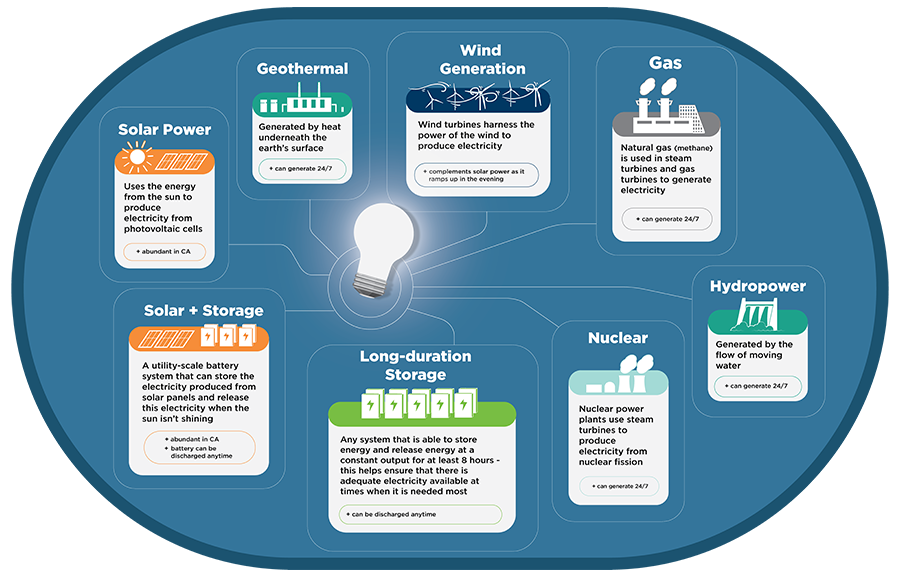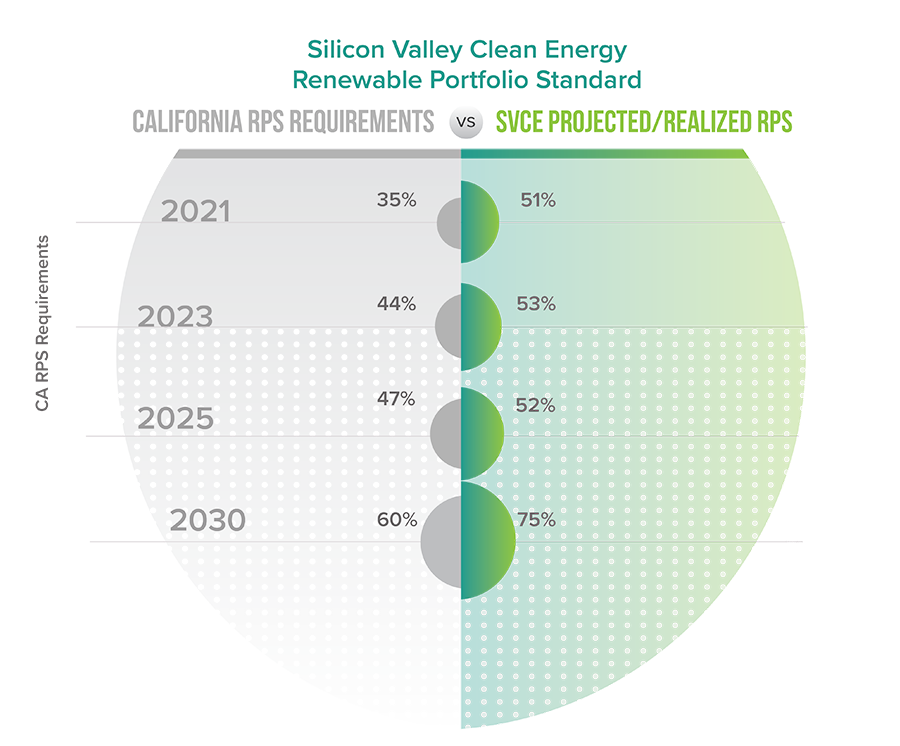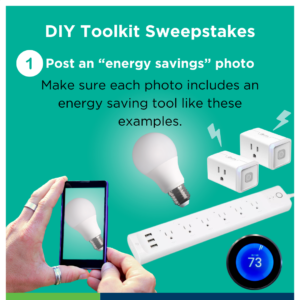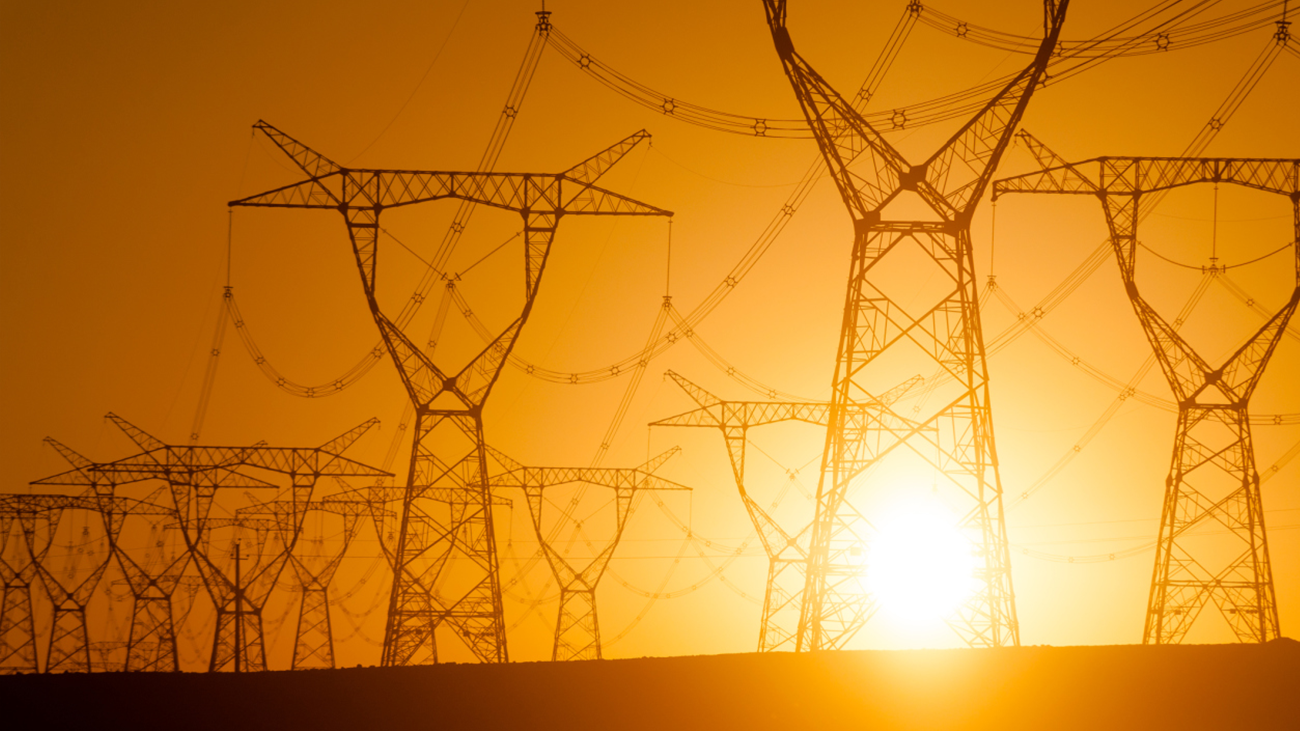
The Power Portfolio Balancing Act
In our recent articles you’ve learned that Silicon Valley Clean Energy buys your electricity, and how the grid distributes that electricity – so now let’s talk about where that electricity comes from.
The short answer: wind, solar, hydro, geothermal, and battery storage in the western US.
The in-depth answer: As SVCE was formed to provide clean power and help you transition away from fossil fuels, our focus has always been on cost-competitive, clean, low-carbon energy sources. But the energy market, policies and regulations have changed drastically since we launched in 2017, illuminating the importance of a reliable and balanced power portfolio. Read on to learn about how SVCE is juggling these priorities.
Generation Sources
Each electricity generation source offers different benefits.
As you can see, no one resource is perfect, but they can complement each other to help us achieve a balanced power portfolio. What even is a power portfolio? Glad you asked! A power portfolio refers to the specific set of energy sources that SVCE buys power from.
Think of your perfect bite of an ice cream sundae – a good base of sweet ice cream, a warm glob of hot fudge and a few salty peanuts. Our power mix is the same – we are striving for that perfect bite – reliable energy to support demand, clean generation to achieve emission reduction goals, and from affordable sources so that people can feel good about their energy.
To get us to this dreamy power portfolio, the SVCE board has adopted two guiding targets for its energy purchases:
- Be 75% renewable and 100% clean – target for 2030 to 2034
- Be 100% renewable, 100% clean – target for 2035 to 2045
These targets help us prioritize which sources we should buy based on the priorities of the communities we serve. But, of course, purchasing electricity is not that simple. Let’s break down the actual products that SVCE purchases.
Energy
- The actual electrons SVCE buys to provide clean electricity to customers.
- Energy is what is scheduled onto the grid from generating facilities.
- SVCE procures clean energy from a diverse portfolio of renewable projects, such as solar+battery, wind and geothermal.
Capacity
- A product that is needed to keep the lights on.
- This is the total amount of electricity a generating facility could produce (i.e., max solar output at noon on a summer day).
- The state requires a certain amount of capacity to be available at all times, particularly on days/times when there is grid strain (a hot summer day at 5 p.m.)
Attributes
- These are used to measure and account for clean energy generation to meet state mandates for the Renewable Portfolio Standard.
- These are tracked in terms of the unit of energy generated (usually megawatt)
SVCE has invested $3.9 billion in renewable energy contracts to help meet our 100% clean energy goals.
The capacity and attributes that the clean projects offer is what helps SVCE meet state procurement requirements.
The Clean Energy Puzzle
On the path to achieving this balanced portfolio, SVCE also has to meet requirements of multiple governing agencies enforcing state and federal standards. SVCE is just one piece of the electricity puzzle.
As California advances towards a goal of net-zero carbon by 2045, all energy suppliers in the state are required to meet the state legislative procurement, or energy purchasing, mandates under SB 100. SB 100 also requires energy generated from 60% renewable sources by 2030 and 100% carbon-free by 2045.
- Renewable Portfolio Standards (RPS) set the percentage of the power portfolio that must be sourced from renewables. SVCE consistently surpasses this annual requirement; in 2025, the RPS requirement is 47% and the SVCE portfolio is projected to reach 52%.
- The RPS requirement applies to all energy providers in the state, contributing to an increased demand for renewable resources.
-
- All of the solar, wind, geothermal and small hydro in the SVCE portfolio qualify for RPS.
- When we shared our 100% clean goals earlier, this was listed separate from renewables because sources like carbon-free large hydropower and nuclear are clean, but not RPS-eligible renewables according to the state regulation.
- Resource Adequacy (RA) requires that energy providers contract enough capacity to ensure grid reliability. While all resource types can count toward this requirement, some resources (such as geothermal, which run 24 hours a day) are more valuable than others (such as solar, which does not produce during all hours). New RA requirements have increased demand and competition for these specific resources, which have increased costs.
- SVCE buys power from many resource types, including gas plants to meet these RA requirements, but these resources are only called on if there is need for them during critical grid conditions.
- While SVCE tries to use clean resources like geothermal and long-duration batteries to meet RA requirements, these can be much more expensive than keeping a few gas plants available for critical moments – and sometimes those clean resources are not even available on the market. So SVCE balances the needs of the grid, support for clean resources and the cost that customers will pay when purchasing RA.
But wait, there’s more! To meet these annual procurement requirements and growing load, the brand-new projects SVCE is sourcing from need to be connected to the grid through the California Independent System Operator (CAISO).
Once the power is generated, it still needs to be put onto the grid for use through a complicated network of power lines. This is called the transmission and distribution system and also has rules and regulations that guide what utilities and developers can and can’t do. If a new solar project is built somewhere that is not already close to a transmission line, a new line will need to be built which may require years of work to get permitting approved, grid studies completed and eventually constructed. Most new renewable energy projects in California are located near existing transmission lines, but as new projects are built, new transmission lines are needed to deliver that clean electricity.
All this to say, we are on our way to achieving that ideal portfolio – and we keep our communities’ priorities of clean, reliable and cost competitive electricity at the core of all we do.
Don’t worry, there is not going to be a pop quiz! You see, most of this is more information than you need. As competition drives up energy prices and legislators and regulating bodies constantly change policy and rules, we want to provide as much information as we can on how, why, and where we are sourcing your clean energy.

